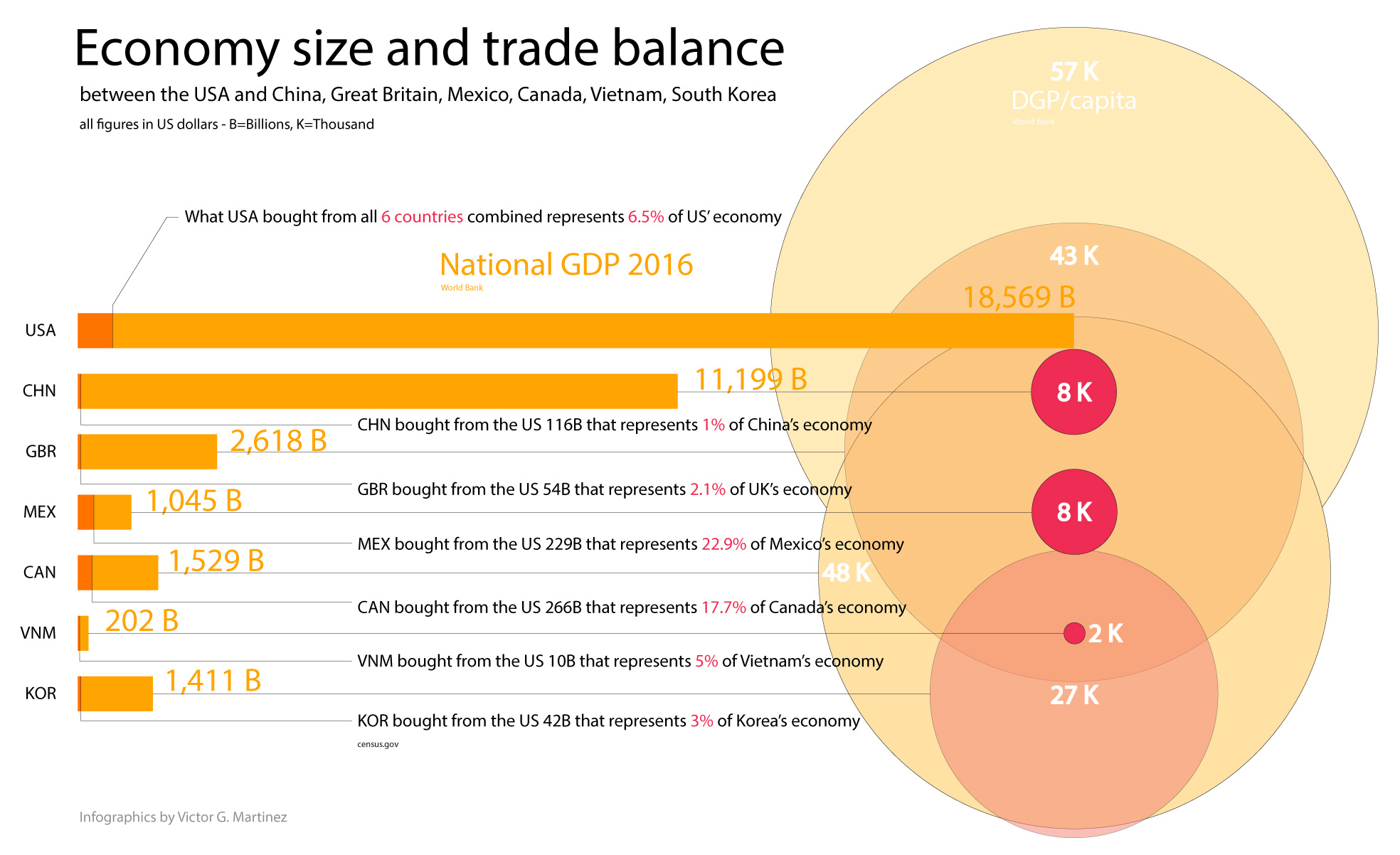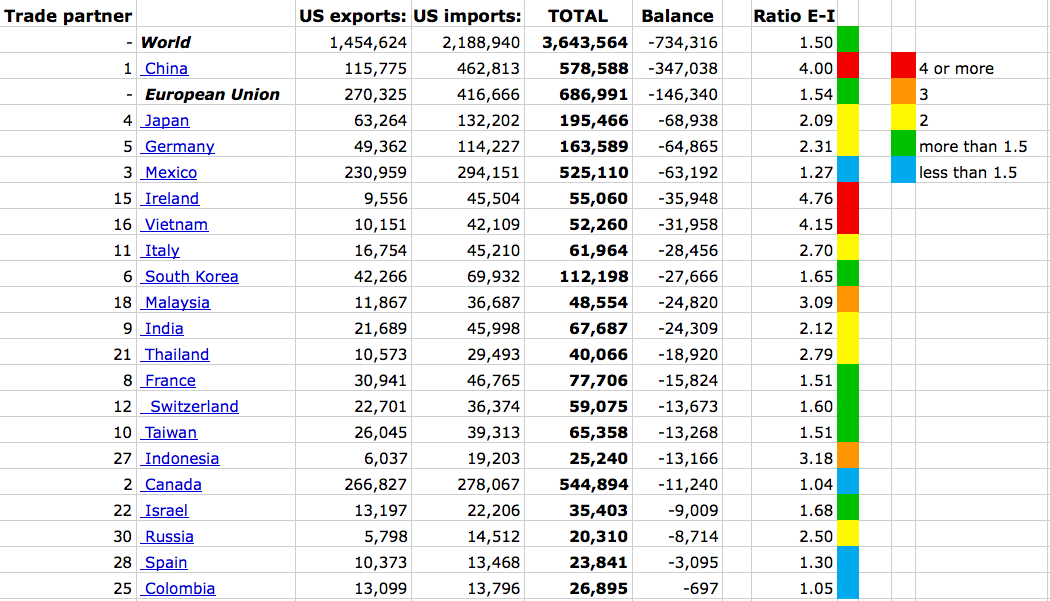First things first, I’m not an economist, but following some basic common sense, and looking at the data with greater care and comparing to other realities, I would like to propose a different discourse about fairness in international trade.
We have heard quite often in the last months about the trade balance between the US and some of its trading partners, and how “unfair” and “uneven” it is.
One first glance to the numbers: size of economy (GDP), US is by far the largest economy in the planet, in 2016 the national GDP was 18,569 billion dollars. Followed by China with 11,199 billions and far behind Japan with 4,884 billions. If we divide this number by the amount of people living in the country we get the average yearly income of each individual (GDP per capita)[1]. The US has an average income per person of 57,400 dollars, while China only 8,100 dollars of average income per person.
Next let’s take a look at the trade balance itself, and how much represents in terms of the total of the economy of each country, as example lets see again US and China: US bought from China 463 billions that represent 2.5% of the US economy, on the other hand China bought 266 billions from the US that represent 1% of China’s economy. In this way you could see that it is quite different, US is buying 1.5 times more than China in relation to their economy’s size, nevertheless, if we take into consideration that US citizens earn 7 times more the Chinese citizens it’s hard to imagine they could buy more.
There are similar stories with other trading partners; the two most important ones for the US are Canada and Mexico. In the following image you can see the size of each country’s economy and the percentage that represents the trade with the US in relation to it. It is quite clear that the economies are quite different and that Canada and Mexico already compromise 17.7 % and 22.9% respectively of their economies, while the US compromises only 1.5% and 1.6% respectively of its own economy in trade with them.

If on top of this we check the average income per person, it is again clear that the US citizens are wealthier, therefore not only can buy more, but also demand more! While the others even if they wanted, they simply cannot afford it. It is well known that the US has 4% of the global population, but consumes 30% of global resources. US is the epitome of consumerism, just imagine what would it mean in economic and environmental terms if the entire world would (if they could) behave the same way.
Lastly, the US president has concentrated the “unfairness” speech with its two closest partners, Mexico and Canada. The next image shows the ratio between different partners. The closer to 1, the more even the balance, the bigger the number more uneven will be. Precisely Canada, Mexico together with Colombia and Spain are among the most even partners, and countries like China, Ireland and Vietnam are on the other extreme.

But please do not forget my first argument, trade balance alone should not be the only factor, how much money you actually have to spend, in other words, how rich you are should also be considered. It’s unfair to think that poorer countries should spend the same amount as richer countries, especially when the richer countries are actually demanding to buy more products because they have the money to buy them with.
Lastly, in some cases, like Mexico where near to 25% of its exports are vehicles and its components, many of the companies making these exports are US companies, like Ford or GM. So the question would be, who actually owns that wealth? It is accounted as Mexico’s export, but it’s actually US companies making the profits… just food for thought.
[1] Evidently GDP per capita is an average of all population, also counting people with no income like children, so we can imagine that the people actually earning money will be making more than that. Also, we need to calculate the disparity in the income, in other words within a given country, how is the wealth distributed. Some countries are more even than others, in some the gap between poor and rich is wide and widening every time more. But we also know that GDP alone to measure well being is outdated and is misleading, there are better ways to understanding well being.
Data obtained from:
https://census.gov/
http://www.worldbank.org/
More cool information here:
http://atlas.cid.harvard.edu/
https://atlas.media.mit.edu/en/